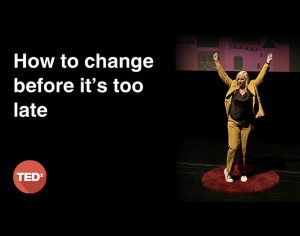Creativity and collaboration in a hybrid working world
A recent BBC survey revealed that nearly 80% of senior business managers, and 70% of the public expect the future of office working to hybrid. That means people will work in the office some of the time, with other days spent working from home (WFH). This is a seismic shift in how work will get done for many organisations, entailing huge challenges in how leaders ensure all colleagues are engaged and working well together. Crucially, everyone needs to prevent silos forming – those ridiculous situations where some teams never meet or really talk to other teams in the business.
What to do?
A lot of organisations have found that during the pandemic WFH actually increased productivity for very task driven activities ‘ people can get through their to-do lists effectively. It’s not so good for creativity and collaboration, those times when people need to work together, explore new ideas and challenge each other’s thinking. Here are some tips for helping your hybrid organisation be more creative and collaborative.
- If possible, use time when the whole team is together to do the creative thinking and development workshops.
- Have more than one team working together in meetings to prevent silos developing
- Time team working sessions for when everyone is in the office. (You may find it useful to set one or two days a week when you expect everyone to be in, and allow flexibility on the other days)
If you have a situation where some people are virtual and some are at the office, you can still have motivating and creative whole-team sessions. The key is to give everyone time to think, everyone has time to be heard, and everyone confidence that their contribution is valuable, including new starters.
Let the topic of the creative session be known in advance, and share some of your basic ideas, or some stimulus material. For example, if you want the team to think about improving customer service, you might suggest some areas that particularly need attention as well as a share a little case study/video/podcast about a company with great customer service that the team could learn from.
- Once in the session, make sure you have the technology arranged so that people on video call can see as many as possible in the room.
- Have some social chat time together first to get everyone settled in. Invite everyone to speak.
- Set a question for the group to explore. You might brainstorm as a whole group ‘ the virtual participants can put ideas on chat, and the ‘in office’ ones use flipcharts.
- Share all the ideas. Then break the group up to explore ideas in more detail. The virtual participants can go into one or more break out rooms, while the in-office team can work in small groups. If there is just one virtual participant ‘ they can join one of the office groups via a laptop or tablet.
When you get the team back together, you’ll need to get your group management skills revved up!
- Invite each group to share their ideas back to the whole team.
- Give a set amount of time per group. Hear all the feedback before you allow critiquing of any ideas.
To get good critiquing of ideas, ask everyone to think about all the feedback, and highlight what they think will work/want to explore further. Don’t encourage people to reject ideas, just to focus on the ones they want to pursue. Go round the entire room inviting everyone to speak before allowing more debate.
You may find there is already a clear consensus for next steps ‘ in which case its time to move to planning mode. If not ‘ then agree with the team what to do to take the ideas on from here.
Extra tips for managing the session successfully
- Discourage the people in-office from having side conversations during whole group sessions
- Encourage all virtual participants to have their cameras on unless there is a good reason not to
- When there are debates and questions, be sure you invite each person to speak, don’t wait for them to volunteer, or it will always be the same people speaking and everyone else will stay quiet.
Working in this way may feel a bit odd at first, you may be used to asking open questions and waiting for people to volunteer to speak. I encourage you to try out this more structured approach, in my experience it transforms participation and engagement, you will hear many more ideas, and everyone will feel more valued and connected. To increase the collaborative effective, you can involve people from other teams across the business
You will also find this approach particularly helps young people and new starters of any age to participate. They will experience working together with the group, learning from others about ‘how things get done around here’, and have the chance to contribute in a safe environment, where all voices are listened to.
And if everyone is working virtually, these hacks are a great way of getting collaboration and creativity going.
However you end up bringing your teams back to the office, enabling your people to spend time thinking and exploring new ideas about how to develop and grow the business can only be a great use of their time and yours.
“
Share via:


















































